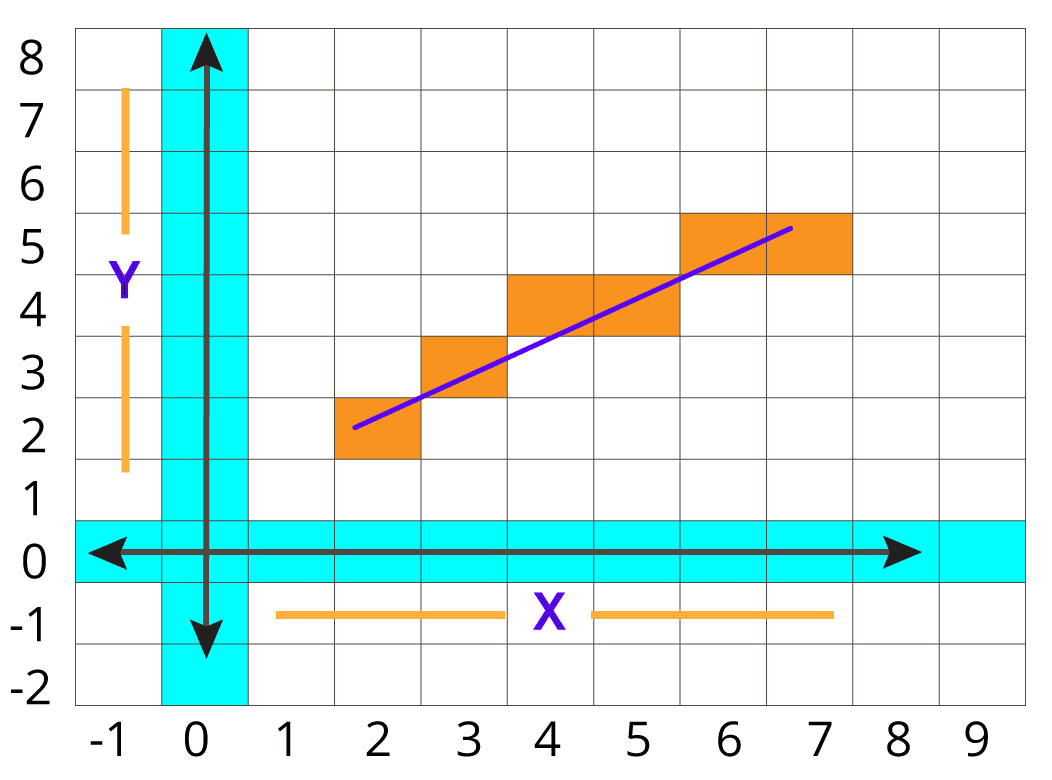Section outline
-
-
General Information and Announcements
Welcome to the Course: Computer Graphics

Course Information:
Course Code: 421
Course Title: Computer Graphics
Credit: 3.0
Teacher's Information
Professor Dr. Md. Ismail Jabiullah
Professor
Department of Computer Science and Engineering
Room # 202, CSE Building, 4/1 Sobhanbag, Mirpur Road
Dhanmondi, Dhaka - 1207, Bangladesh
Cell: +880-1819299960
E-mail: drismail.cse@diu.edu.bd
For More Information: -
My Research Areas Published Number of...
- Network Security - Cryptography = Books : 26
- Block-chain and Cryptocurrency - IoT Security = Journal Papers : 64
- Artificial Intelligence - Deep Learning = Conference Papers : 98
- Neural Networks - Expert System = Book Chapters : 04
- Robotics - Virtual Reality
- Augmented Reality - Mixed Reality
-
CR and Co-CR Information
- Section - PC-A
- - CR Nur Salman Rahman, ID: 172-15-1531, Cell: 01756474170, E-mail: nur-15-1531@diu.edu.bd
- - Co-CR Md Tashanul Iqbal Sifat, ID: 172-15-1532, Cell: 01747934613, E-mail: tashanul15-1532@diu.edu.bd
- Section - PC-A
-
Course Objectives
Computer Graphics is a 3-credit senior-level course that introduces the concepts and implementation of computer graphics. As one of the important subject areas of the study of computer science and information systems, this course will focus on the theoretical aspects and implementation of computer graphics using OpenGL.
Computer Graphics and Design - Foundation provides potential for the engagement of integrated learning opportunities and the capacity to develop design thinking skills to effectively transfer knowledge and understanding across disciplines. The applied design thinking and problem solving focus of this course helps equip learners to develop skills essential for the digital age. -
Course Outcomes
Course Learning Outcomes (CLO’s): (at the end of the course, student will be able to do)
CLO1
Able to explain the core concepts of computer graphics, including output primitives, anti-aliasing, transformation and viewing in 2D.
CLO2
Able to apply the concepts of 3D display, projection, perspective, parametric curves, modelling and transformation.
CLO3
Able to describe the fundamentals of colour models, lighting and shading models, animation, dithering, hidden surface elimination and rendering.
CLO4
Able to demonstrate effective OpenGL programs to solve graphics programming issues, including output primitives, 2D and 3D transformation, objects viewing and modelling, colour modelling, lighting and shading.
-
-
Week 1: Background
Topics for Discussion
Lecture 1: Introduction to Computer Graphics
Lecture 2: Video Display Devices: Refresh Cathode Ray Tubes, Raster & Random Scan displays, Color CRT Monitors, DVST & Flat panel displaysExpected Learning Outcome:
- Appreciate the use of Computer Graphics and it's real life Application.
- Able to explain the core concepts of computer graphics, including output primitives, anti-aliasing, transformation and viewing in 2D.
-
Lesson Plan of this Session
- Introduction
- Myself
- Lesson Slide 1
- Ice-Breaking and Motivation
- Lesson Slide 2
- Amazing Video
-
Supporting Videos:
1.
2.
3.
-
-
Week - 2
Topics for Discussion
Lecture 3: Points and Lines, Line Drawing Algorithm
Lecture 4: DDA Algorithm - Example with Plot in a GraphExpected Learning Outcome:
Output Primitives- Able to understand the core concept of output primitives and transformation..
- Able to implement the algorithm rendering the graphics.

-
Lesson Plan of this Session
- Lesson Slides: Class Contents
- Ice-Breaking and Motivation
- Lesson Slides: Class Contents
- Amazing Video
- Lesson Slides: Class Contents
-
Week 3: Understanding the display Visualization
Topics for discussion
Class Test 1
Lecture 5: Parameter Description of Bresenham's Line Drawing Algorithm
Lecture 6: Bresenham's Line Drawing Algorithm Implementation with ExampleExpected Learning Outcome:
- Able to understand the core concept of output primitives and transformation..
- Able to implement the algorithm rendering the graphics.
-
Lesson Plan of this Session
- Lesson Slides: Class Contents
- Ice-Breaking and Motivation
- Lesson Slides: Class Contents
- Amazing Video
- Lesson Slides: Class Contents
-
Week 4: Understanding the Display Visualization
Topics for Discussion
Lecture 7: Properties of Circle, Circle Drawing Algorithm: Midpoint
Lecture 8: Mid-point circle Drawing Algorithm Implementation
Expected Learning Outcome:
- Able to understand the core concept of output primitives and transformation..
- Able to implement the algorithm rendering the graphics.
-
Lesson Plan of this Session
- Lesson Slides: Class Contents
- Ice-Breaking and Motivation
- Lesson Slides: Class Contents
- Amazing Video
- Lesson Slides: Class Contents
-
Submission Link of CG-PC-A Assignment Link on or before 18.10.2020
Necessity, algorithm, example, applications, merits and demerits of DDA, Bresenham, Mid-Point circle algorithm
-
Week 5: Topics for Discussion
Class Test 2
Lecture 9: Antialiasing and Its Different Techniques
Expected Learning Outcome:
- Able to understand the resolution and projection of the output primitives.
- Able to implement the algorithm to pictorial form in the objects.
-
Lesson Plan of this Session
- Lesson Slides: Class Contents
- Ice-Breaking and Motivation
- Lesson Slides: Class Contents
- Amazing Video
- Lesson Slides: Class Contents
-
Week – 6: Topics for Discussion
Lecture 10: 2-D Geometric Transformation
Lecture 11: 3-D Geometric Transformation and Review Class (Previous Lectures)
Expected Learning Outcome:
- To evaluate the transformation of an object and viewing in two dimensional way.
- To perform with the mathematical expression in a computational display.
-
Lesson Plan of this Session
- Lesson Slides: Class Contents
- Ice-Breaking and Motivation
- Lesson Slides: Class Contents
- Amazing Video
- Lesson Slides: Class Contents
-
Week – 8 and 9: Topics for Discussion
lecture 12 : 2-D Viewing, Window-to-Viewport Coordinate Transformation
Lecture 13: 2-D Clipping, Line Clipping Algorithm: Cohen-Sutherland
Expected Learning Outcome:
- Able to understand the core concept of output primitives and transformation..
- Able to implement the algorithm rendering the graphics.
-
Week - 10: Topics for Discussion
Lecture 14: 2-D Clipping, Polygon Clipping Algorithm: Sutherland Hodgeman - Example
Lecture 15: 2-D Clipping, polygon clipping Clipping Algorithm: Weiler Atherton - Example
Expected Learning Outcome:
- Able to understand the core concept of output primitives and transformation..
- Able to implement the algorithm rendering the graphics.
-
Week – 11: Topics for Discussion
Lecture 16: 2-D Clipping, Polygon Clipping Algorithm: Sutherland Hodgeman
Lecture 17: 2-D Clipping, Polygon Clipping and Clipping Algorithm
Expected Learning Outcome:
- Able to understand the core concept of output primitives and transformation
- Able to implement the algorithm rendering the graphics
-
Curves - 3 and
-
Forum activities are very much important for students to engage them in discussion.
Every student must share his/her idea in this forum.
At least one question and one answer must be put here to prove the participation.
It is evaluated and considered for upgrading the points.
Last date of participation is 28 November 2020.
-
Week 12 - Topics for Discussion
Class Test 3
Lecture 18: 3-D Display Methods, Parallel Projection and Perspective projection
Lecture 19: Depth Cueing, Visible Line and Surface Identification, Surface Rendering
Expected Learning Outcome:
- Able to understand the core concept of output primitives and transformation
- Able to implement the algorithm rendering the graphics
-
Forum activities are very much important for students to engage them in discussion.
Every student must share his/her idea in this forum.
At least one question and one answer must be put here to prove the participation.
It is evaluated and considered for upgrading the points.
Last date of participation is 4 December 2020.
-
Week 13 - Topics for Discussion
Lecture 22: Halftone Pattern and Dithering Techniques
Lecture 23: Color Models and Color Applications
Expected Learning Outcome:
- Able to understand the core concept of output primitives and transformation
- Able to implement the algorithm rendering the graphics
-
Forum activities are very much important for students to engage them in discussion.
Every student must share his/her idea in this forum.
At least one question and one answer must be put here to prove the participation.
It is evaluated and considered for upgrading the points.
Last date of participation is 14 December 2020.
-
Final Exam Syllabus:
1. Transformation: 2-D and 3-D (Five Basic Operations with examples, Mathematical Problems)
2. Viewing: Window to viewport mapping
3. Clipping: Cohen-Sutherland Line Clipping Algorithm, Polygon Clipping Algorithm:Sutherland Hodgeman, Weiler-Atherton Polygon Clipping Algorithm.
Liang-Bersky line clipping algorithm
4. 3-D Display and Projection: Parallel and Perspective Projection, Depth Cueing, Surface Rendering
5. Color Model: RGB, CMYK
6. Half-tone and Dithering
Final Exam Assessment plan (Unified)
Full Marks: 40
-
Prepare the answer script as the given format
With all answers in a doc file
Then prepare a pdf of the doc file
Submit both BLC and google form link
-
You can only submit pdf file here
-
-
Forum activities are very much important for students to engage them in discussion.
Every student must share his/her idea in this forum.
At least one question and one answer must be put here to prove the participation.
It is evaluated and considered for upgrading the points.
Last date of participation is 14 August 2020.
-
-
-
Forum activities are very much important for students to engage them in discussion.
Every student must share his/her idea in this forum.
At least one question and one answer must be put here to prove the participation.
It is evaluated and considered for upgrading the points.
Last date of participation is 14 August 2020.
-

